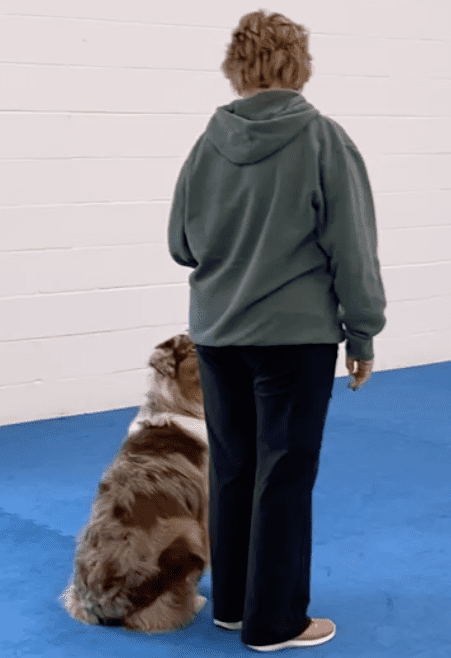Just after Christmas I began reading Atomic Habits by James Clear. This is a well written book that distills complex psychology, learning theory and neuroscience into an easy to understand manual for how to improve your life by making good habits form and making bad habits go away. As I burned through the chapters, I could not help but draw parallels to the lessons I teach about dog training every day.
One of the key concepts in the book is that if you want to achieve a goal, you must focus on the small habits (the systems) that drives you toward that goal, not the goal itself. According to James Clear, “You do not rise to the level of your goals. You fall to the level of your systems.”The same concept applies to dog training. When I talk to most new dog guardians, they tell me they just want a “good” dog or a “well behaved” dog. That is their goal. The systems that drive them to that goal are early socialization, affection, a trusting relationship, and of course training. I always tell dog guardians that dog training for pet dogs is really about creating good habits and making sure that bad habits don’t take hold.
Building habits in our dogs is no different than what James Clear outlines for his readers. He lays out four laws of behavior change that are a simple set of rules one can use to build better habits. They are 1) make it obvious 2) make it attractive 3) make it easy, and 4) make it satisfying. Explaining and using Thorndike’s Law of Effect, Clear explains that the environment cues a behavior. That behavior results in a consequence. If the consequence is good, that behavior will be repeated, when the cue is perceived in the future. That is the bulk of what we do as dog trainers…We teach people how to set their dog up for success by making changes in the environment to make good behavior more likely (make it easy). We teach them how to come up with simple and unambiguous cues for common behaviors like “Settle” to have the dog go lie on a mat (make it obvious). We tell people to use high value rewards when training and make sure the “real life” reward of the behavior makes it worthwhile to do as well (make it satisfying and attractive).
Let’s look at a real life dog example of how this might be incorporated. You do not want your dog on the furniture and come to me to help you achieve your goal. The first thing I will do as a trainer is help you develop an alternative behavior/habit for the dog. My suggestion might be teaching the dog to rest somewhere else in the room. First, I will have you choose something like a comfy bed the dog finds satisfying to lie on. I will put it in an obvious place in the room where the dog can still be a part of family time, making it an attractive place to be and easy to get to. Then I will put the behavior of going to the bed on cue. I will make the cue really simple like the word “settle”. I will help you train and put this behavior on cue so that you can cue this behavior when the dog usually likes to get on the couch. Then I would have you practice; because in order to create a habit, its takes a fair amount of repetition.
James Clear’s book goes into deep explanation of each of the 4 rules chapter by chapter. Then he spends some time working through some advanced questions and concepts including what role genetics plays in developing habits and how to keep motivation high so that habits stick. I swear every part of this book has application to dog training. When I think about it, why wouldn’t it. It is just another application of behavioral science that hopefully all dog trainers are using.






0 Comments